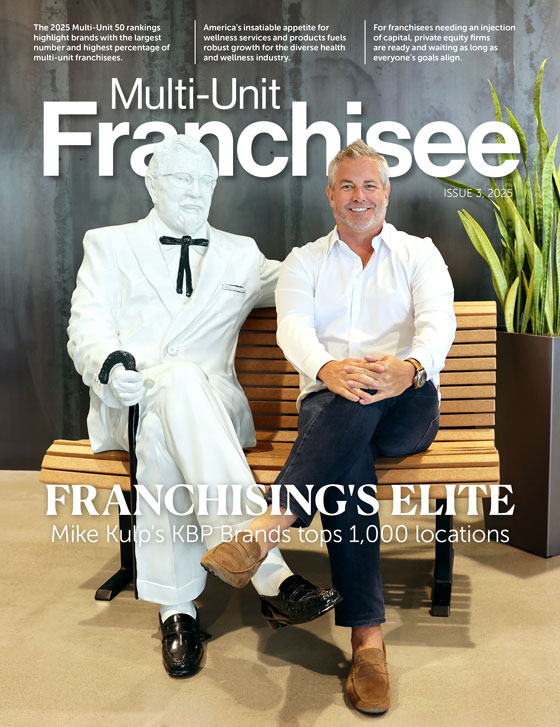Say What You Mean: Difficult Conversations Require Intentional Communication

Maintaining strong relationships with team members, even during difficult conversations, is key to business success. Good leaders know that ignoring tough subjects causes them to fester, so the best way forward is to become more comfortable with having uncomfortable conversations.
Fear and predictability
No matter how developed we are, humans are still animals. Our brains are wired to protect us from harm, and when there is uncertainty, we begin to prepare for all of the possible what-ifs. But when we understand the potential negative outcomes, we can begin to prepare for them. An honest approach is evolutionarily sound.
Our brains follow this same path in professional scenarios. Without clarity, they seek to understand what may be wrong or could go wrong, which can lead to lost time and energy spent contemplating negative outcomes that never happen. Transparency, even when it may feel uncomfortable, provides predictability and can alleviate this fear.
Direct feedback
Providing straightforward feedback can reduce questions and set clear expectations for staff members, but it’s not easy. It helps to have a process in place. Here are some ways to make difficult conversations less stressful for everyone involved:
- Think about your motive. Do you want to have this conversation for the betterment of the team member or the organization at large, or are you just looking for an opportunity to say, “I’m right?”
- Leverage self-talk. Even if you know that having the conversation is the right thing to do, it can be difficult. Remind yourself that your intent is good, and remember that people want feedback.
- State your intent early. It is often helpful to begin with clarity. You might say something like, “I want to have this conversation because I think it will help us improve,” or “I see myself in you a bit. I want to share some guidance that someone once gave me that was valuable for my development.” Be clear about the fact that your goal is to be supportive, not punitive.
- Focus on “I” statements. Say things like “I noticed,” “I felt,” and “I think” throughout the conversation.
- Avoid “you” statements. Phrases like “you always” or “you never” can feel accusatory and prompt the receiver to shut down. Remember to frame the conversation around behaviors, not personal attributes, to avoid the feeling of a personal attack.
This framework is useful in almost any situation when clear, direct communication is necessary. The same strategies apply in higher-stakes conversations, but there are a few more steps to take to ensure the discussion goes as smoothly as possible.
When something must change, you should:
- Acknowledge the seriousness of the conversation. Say something like, “This is going to be a hard conversation,” or “This might be difficult to hear, but it’s important.”
- Be direct. Throughout the conversation, be clear. Do not use euphemisms or sugarcoat anything. Start by stating the issue clearly and directly.
- Explain the impact. Sharing the motivation behind the conversation can be helpful and often provides valuable context for team members looking to do better. For example, let the person know if you must have the conversation because there is a current risk to the business or a safety issue for a client.
- Be specific about what must change. Make it clear that what is currently happening cannot continue. Then provide a clear alternative or solution to guide them.
- Be transparent about consequences. Share what needs to change, and share what may happen if there are no changes.
Centering kindness
While many people are nice in professional situations, this isn’t always the best approach. I’ve heard people express concern about this, noting things like, “Everyone is so nice, but I don’t feel like I’m getting any real feedback.”
Being nice is often a surface-level attribute. There’s nothing wrong with it, but being nice does not have the same impact as being kind. Often, the kind thing to do is to broach the tough subject and have the difficult conversation that will lead to professional and organizational growth that benefits everyone. Being hyperfocused on being nice can hold people back from saying what needs to be said.
Being direct, even when it’s uncomfortable, is one of the kindest things you can do as a leader. It shows respect for the other person’s growth, trust in their ability to receive and apply feedback, and a commitment to clarity and long-term success. Direct feedback, when delivered with care, isn’t harsh; it’s a powerful form of kindness.
Nichole Holles, PHR/SHRM, is the senior vice president of people strategy and governance at Right at Home. She has a deep passion for transforming HR departments into strategic business partners and enhancing employee experiences.
Share this Feature
Recommended Reading:
| ADVERTISE | SPONSORED CONTENT |
FRANCHISE TOPICS
- Multi-Unit Franchising
- Get Started in Franchising
- Franchise Growth
- Franchise Operations
- Open New Units
- Franchise Leadership
- Franchise Marketing
- Technology
- Franchise Law
- Franchise Awards
- Franchise Rankings
- Franchise Trends
- Franchise Development
- Featured Franchise Stories
FEATURED IN

Multi-Unit Franchisee Magazine: Issue 3, 2025
| ADVERTISE | SPONSORED CONTENT |

$175,000
$200,000





 The multi-unit franchise opportunities listed above are not related to or endorsed by Multi-Unit Franchisee or Franchise Update Media Group. We are not engaged in, supporting, or endorsing any specific franchise, business opportunity, company or individual. No statement in this site is to be construed as a recommendation. We encourage prospective franchise buyers to perform extensive due diligence when considering a franchise opportunity.
The multi-unit franchise opportunities listed above are not related to or endorsed by Multi-Unit Franchisee or Franchise Update Media Group. We are not engaged in, supporting, or endorsing any specific franchise, business opportunity, company or individual. No statement in this site is to be construed as a recommendation. We encourage prospective franchise buyers to perform extensive due diligence when considering a franchise opportunity.